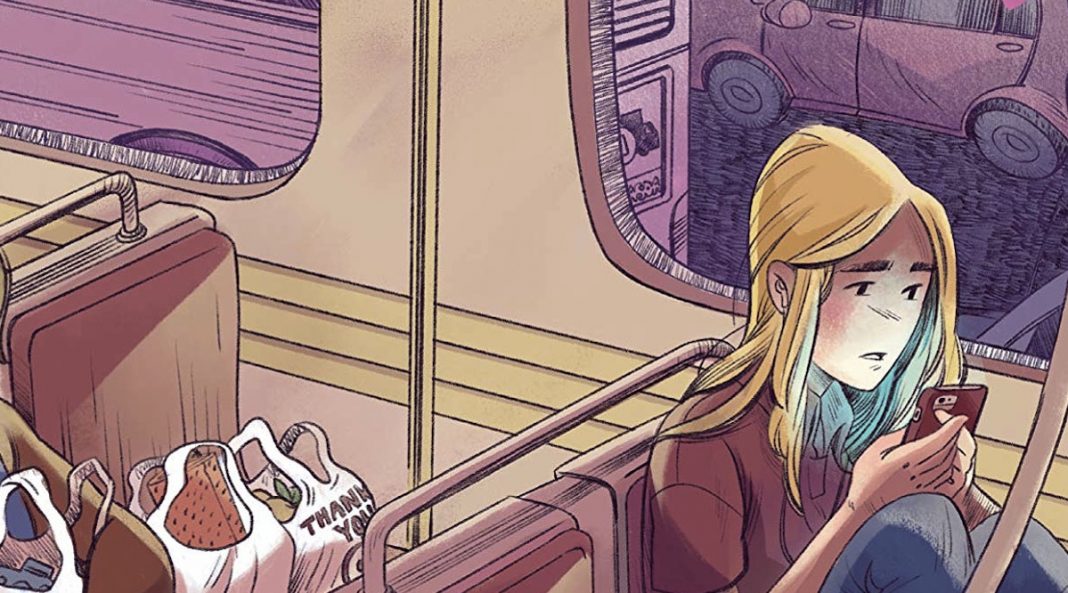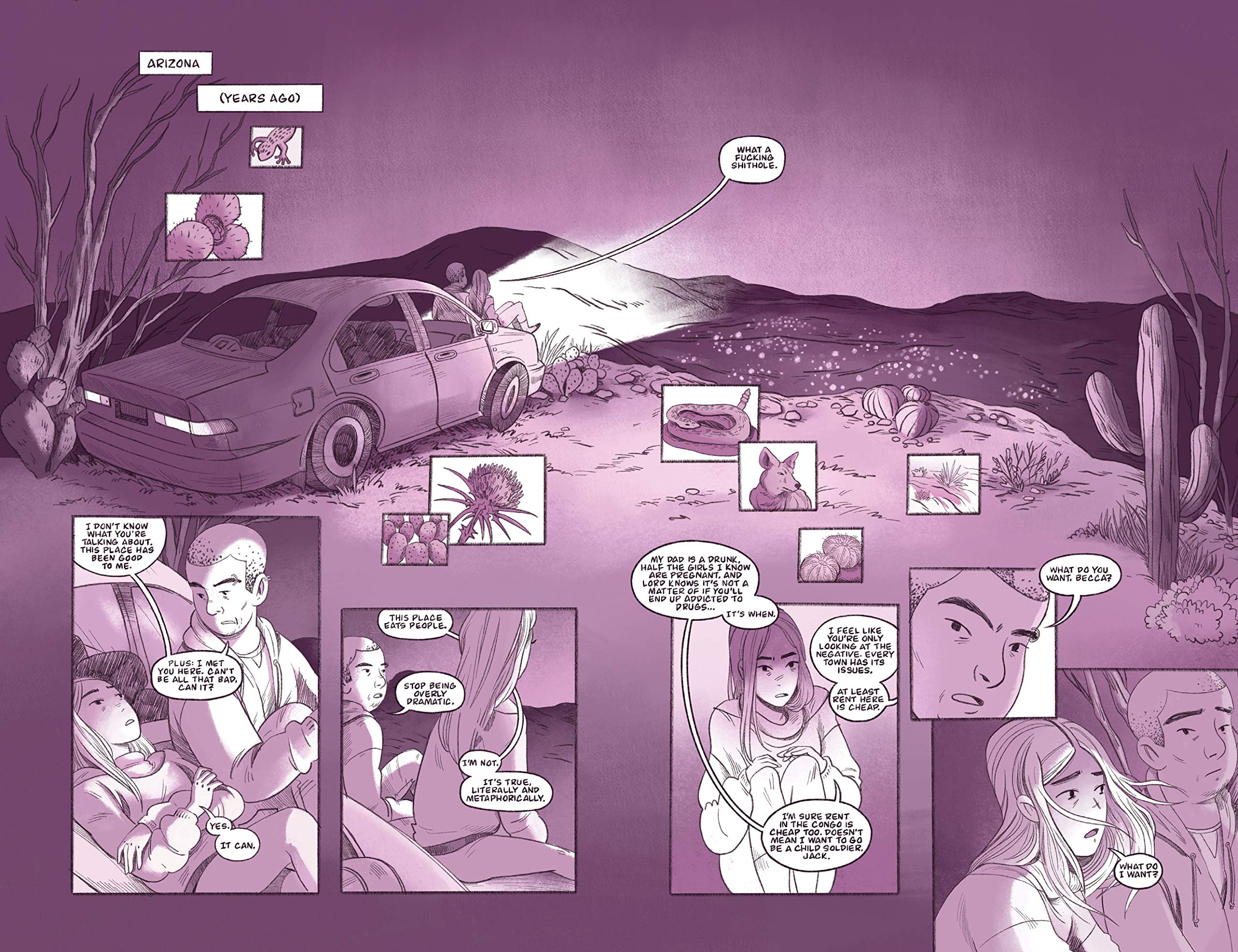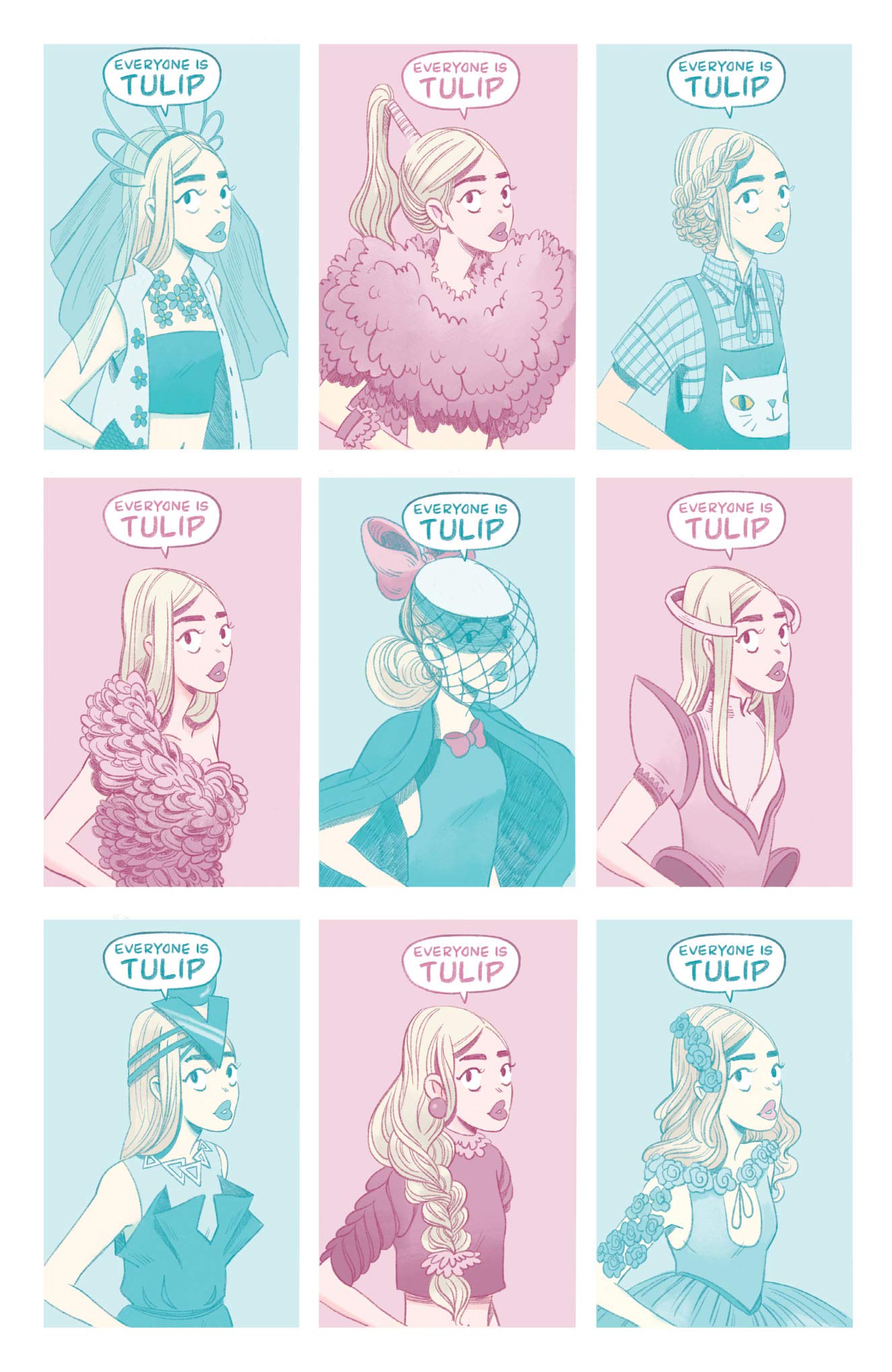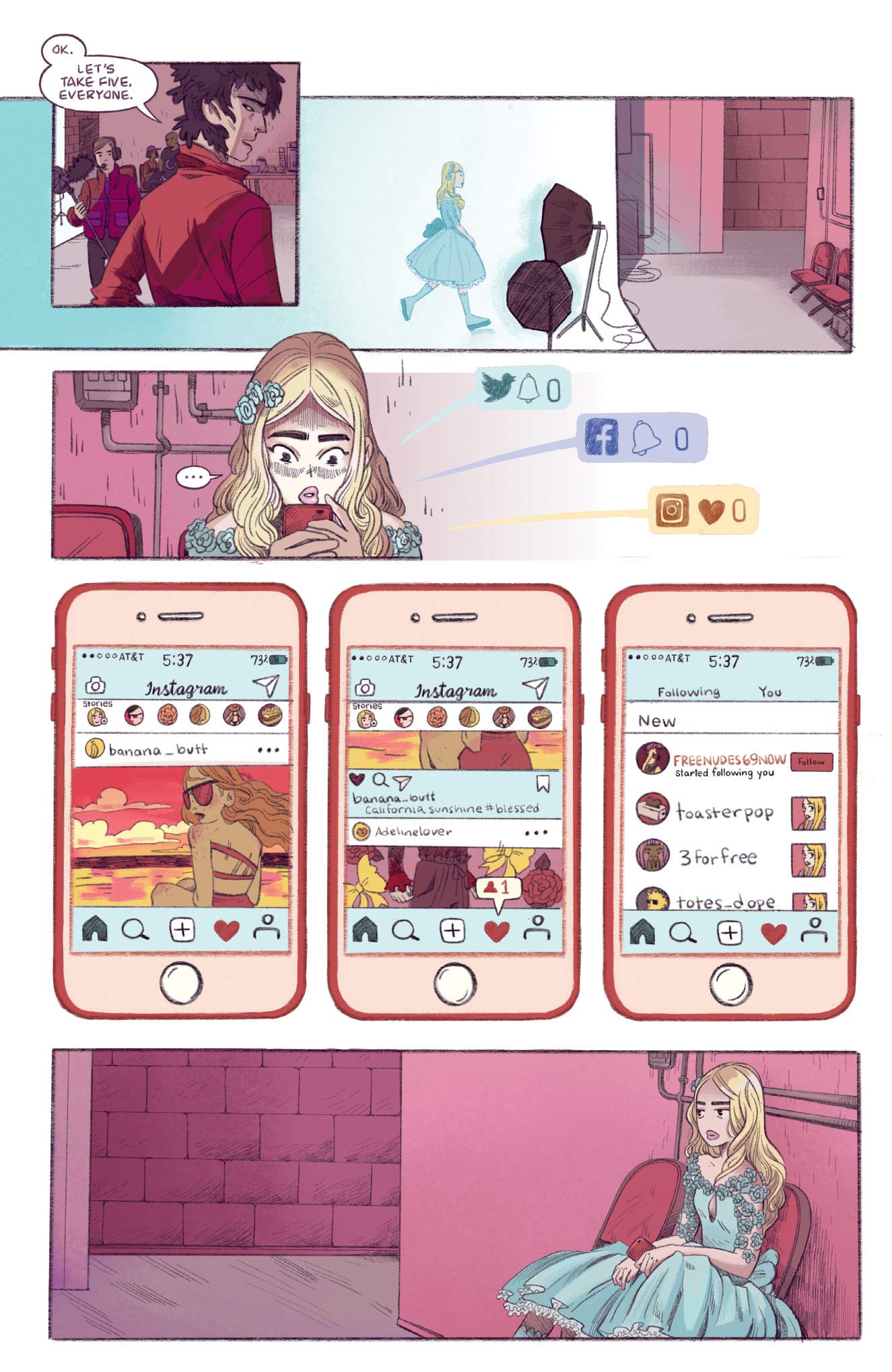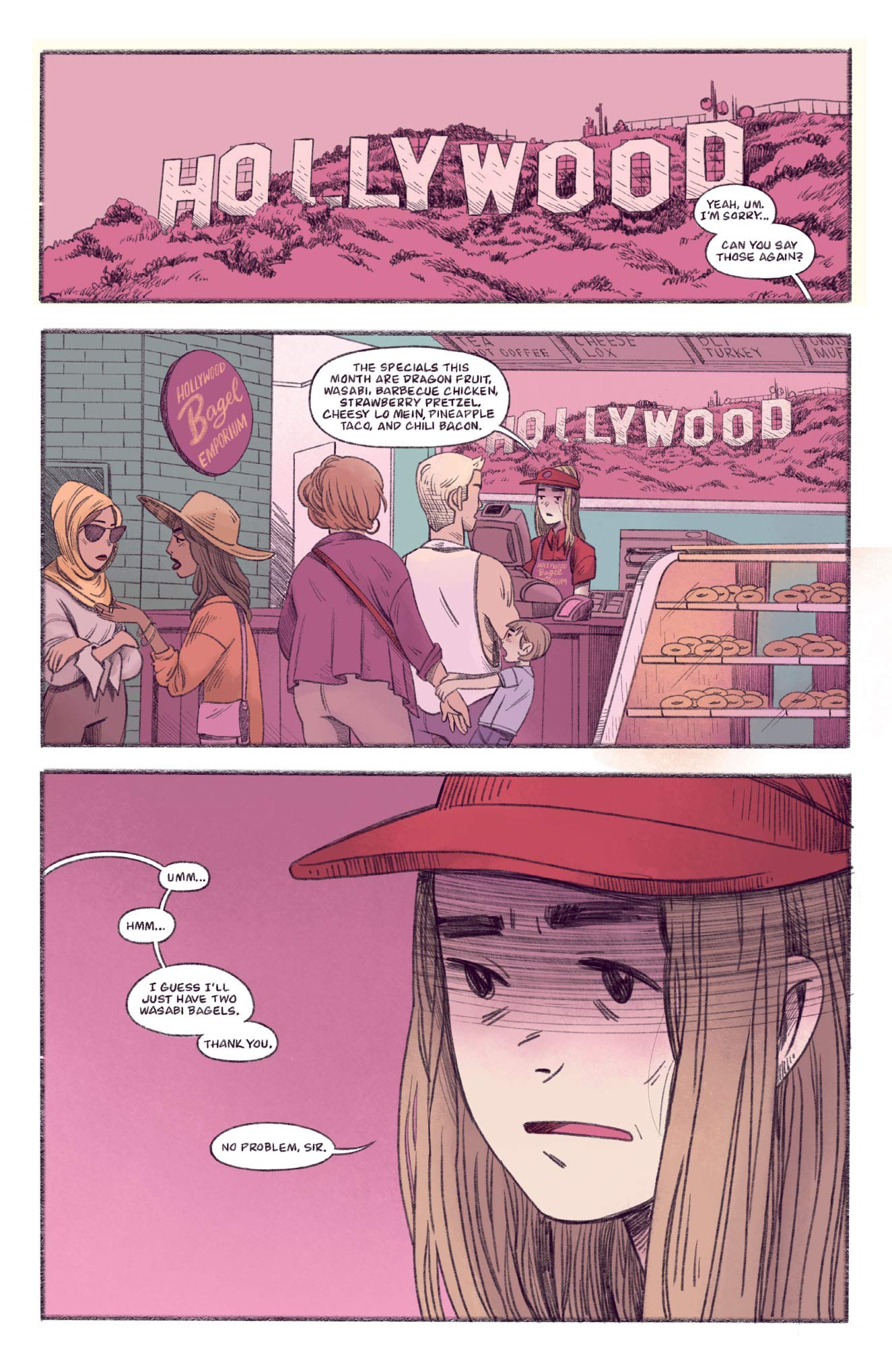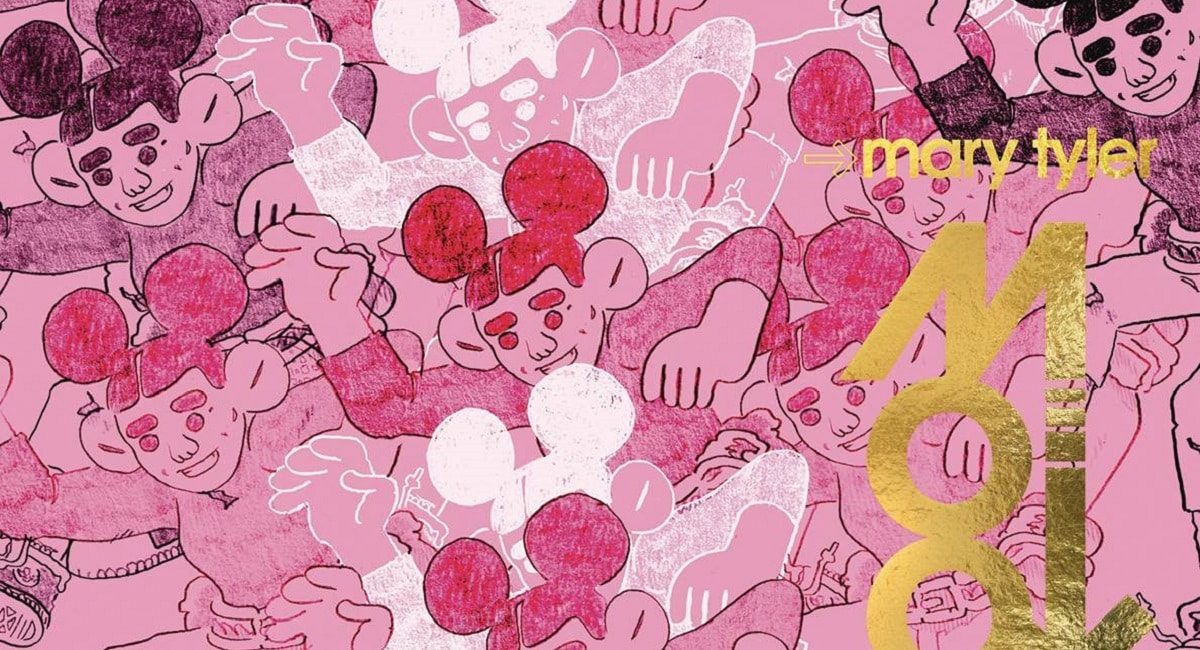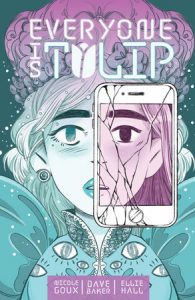
In Everyone is Tulip by Dave Baker and Nicole Goux, with colors by Ellie Hall and Goux, readers get to peer behind the curtain of the rise of the hottest new star on the internet… but in the era of social media, everything that rises must eventually converge.
The Beat caught up with Baker and Goux over email to find out more about how the protagonist’s perspective informs the aesthetics, to discuss the true medium in which all artists operate (compromise), and to explore the influence of Japanese street fashion on Everyone is Tulip!
AVERY KAPLAN: What was the genesis of Everyone is Tulip?
DAVE BAKER: Everyone Is Tulip is inspired by a movement of YouTube based performance artists that came to cultural prominence a few years ago. People Like Belle Delphine, Poppy, and the muppet performance art series Don’t Hug Me, I’m Scared. Nicole and I became very fascinated by these people, their world, and the obvious trials and tribulations they were going through. We began to discuss what a comic might look like that could be centered on people from this world, and Everyone Is Tulip is the result.
KAPLAN: One aspect of the story I liked a lot was the way Becca’s backstory is revealed in flashback scenes, which are distinguished from the scenes set in the present through color. Was it important to show Becca’s life before she arrived in Southern California?
BAKER: The central theme of this book is compromise. It’s something that all the characters, who are attempting to navigate the seedy underbelly of the internet, struggle with. We used the flashbacks to help us build out a character that was both relatable and flawed. That’s something that Nicole and I are both really passionate about. We love creating worlds that are filled with humor and sadness. And the narrative mechanic of these purple flashbacks really helped us round out Becca’s backstory and provide a very clearly delineated arc for her. We wanted her actions to be very understandable by the reader, and hopefully we’ve been able to accomplish that with this mechanic.
NICOLE GOUX: One of the things we really tried to push in this book is the contrast between the different parts of Becca’s life. Between her past and her present, between her real life and her internet life. We used color to really emphasize the way that she sees her world. Her past is drab and dull and in comparison her life in LA is bright and colorful. In the same way, her LA life looks dull compared to her internet persona. This is a little window into how Becca perceives the world. That may or may not be the healthiest way to look at things, but I think it gives the reader a clue into why Becca makes the decisions she does throughout the book.
KAPLAN: There are many interesting relationships in Everyone is Tulip, but one that stood out to me in particular was the dynamic between Becca and her roommate, Eve. Was it important for the narrative to include a character that was immediately resentful of Becca’s success?
BAKER: Eve is a person who comes from money, she’s been in LA for a long time, and she went to school to become an actor. Her whole identity is wrapped up in the pursuit of fame, rather than actually pursuing it. And when Becca, who is not formally trained, finds success it instills a “why not me” mentality in her roommate. Which, honestly, I find relatable. So much of being a person in any creative industry is just being in the right place at the right time. The lack of logic to the way things work is something that can be very vexing to would-be career professionals. And in our story I think this is an illustration of just one of the MANY ways that internet fame warps your immediate surroundings.
KAPLAN: Is this a story that could have been told before the advent of social media? Has technology irrevocably changed the relationship between the individual and Hollywood, or is this change superficial?
BAKER: I think you could tell a story that’s similar to this, because compromise is the true medium of every artist, however, this specific story is about how far would you be willing to go in a digital age, right? It’s about the very specific and terrifying way phones and computers and the internet have warped our reality to be a flattened series of 1’s and 0’s. It’s about how the deeply subjective human experience has now been transformed, through a horrifying new alchemy that no one quite understands, into an altar to The Self. Our book is a character spotlight on a person trying to do something that has now become the measuring stick for American Life. There was a period of time where the greatest achievement any person could make would be to write The Next Great American Novel. Now our collective goals revolve around creating a piece of short-from content that millions of people passively pass through on their way to a digital destination.
KAPLAN: What was the process of integrating social media into Becca’s world like? When did you decide to include “Instagram likes” and “social media notifs” as a visible element of the environment?
GOUX: The idea to include social media imagery into the story came very early on. Dave and I are obsessed with formalist comics and any time we can find new ways to show things or tell stories, that excites us. Social media is such an essential part of this story that I think it would have been a major missed opportunity if we didn’t play with ways of showing it. That being said, some of it is in the script, but much of it isn’t. I often see it as a puzzle when I’m laying out a page. What’s the most interesting way I can show this? What haven’t I tried yet? Does this communicate in the way I want it to?
KAPLAN: I adore the art style in Everyone is Tulip. What was it like developing the aesthetics of the characters? Where did you turn for inspiration for the many amazing outfits we see the characters wear over the course of the story?
GOUX: Thank you! The inspiration for the characters came from a bunch of different places. Some of it comes directly from the youtubers’ aesthetics that we were seeing at the time, some of it comes from movies like The Neon Demon or Perfect Blue. I also took a lot of inspiration from haute couture runway shows and Japanese street fashion. I was trying to look in the places that people are pushing fashion to its limits, and take my cues from them.
KAPLAN: Have there been any comics (or any other kinds of stories) that have been especially influential for you lately?
BAKER: I’m always reading and watching stuff. Nicole and I are obsessed with formalism in comics, so we’re always talking about new ways to approach stories. I think for this book we drew a lot from the real world and we drew a lot from films. We were heavily interested and influenced by Perfect Blue and Millennium Actress by the great director and mangaka Satoshi Kon, Ingrid Goes West, The Neon Demon, and Snotgirl by Bryan Lee O’Malley and Leslie Hung.
KAPLAN: Is there anything else you’d like me to be sure and include?
BAKER: I think I’d just like to say that Nicole and I worked very hard on this book. it’s been a labor of love and has taken us a considerable amount of time. We’ve really tried to make something that will stand the test of time. Will we succeed? Who knows. But we really swung for the fences. You can find me at http://www.heydavebaker.com/ or @XDaveBakerX on Twitter and on Instagram.
GOUX: I think there are few people who won’t relate to this story on some level. If you’re someone who lives your life on the internet, like we all do now, or if you’re a person who creates things in any capacity, you’re going to find something in this story that speaks to you.
You can find me and my work at www.nicolegoux.com on twitter at @nicolegoux and on IG at @ngoux.
Everyone is Tulip is currently available at your local comic shop or public library.


